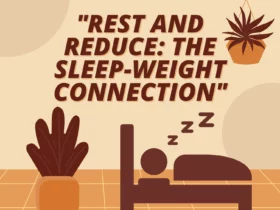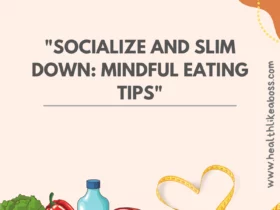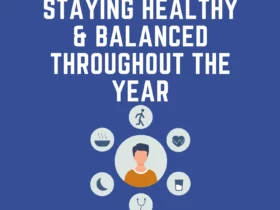In today’s fast-paced world, stress has become an unavoidable part of life for many. But what if there was a natural and holistic way to combat stress and find inner peace? Enter yoga—a time-tested practice that offers powerful tools for managing stress and promoting overall well-being.
In this comprehensive guide, we’ll explore the intricate relationship between yoga and stress, delving into the science behind how yoga affects the body’s stress response system. From calming breathwork and gentle stretches to dynamic flows and meditation techniques, we’ll uncover the myriad ways in which yoga can help alleviate stress and cultivate resilience in the face of life’s challenges.https://healthlikeaboss.com
Whether you’re a seasoned yogi or a newcomer to the practice, our SEO-optimized resource offers practical tips, expert insights, and evidence-based research to help you harness the transformative power of yoga to reduce stress and enhance your quality of life. Join us as we embark on a journey towards greater peace, balance, and well-being through the practice of yoga and stress management.
Unwinding the Knots
In the hustle and bustle of modern life, stress has become an unwelcome companion that can take a toll on our physical and mental well-being. Amidst the chaos, yoga emerges as a guiding light, offering a sanctuary of tranquility. Beyond its physical prowess, yoga’s profound impact on stress reduction has made it a sought-after practice for those seeking solace in the midst of life’s demands. In this article, we delve into the science and art behind how yoga serves as a powerful tool to unwind the knots of stress and restore balance to our lives.
The Stress Epidemic
The fast-paced nature of contemporary life has led to an epidemic of stress-related issues. From tight deadlines to endless notifications, our bodies and minds are constantly on high alert, triggering the body’s fight-or-flight response. Chronic stress has been linked to various health problems, including anxiety, depression, insomnia, and even cardiovascular issues. Enter yoga – a centuries-old practice designed to harmonize the mind, body, and spirit.
The Mind-Body Connection in Stress Response
To understand how yoga combats stress, we must first grasp the intricate connection between the mind and body. Stress doesn’t solely reside in the mind; it manifests physically as tension, muscle stiffness, and shallow breathing. Yoga recognizes this mind-body interplay and addresses stress at both levels.
Through deliberate breath control, gentle movement, and mindfulness, yoga engages the body’s relaxation response. This counteracts the stress-induced fight-or-flight response and encourages a sense of calm. As we flow through yoga poses, we release physical tension, and the mind follows suit, ushering in a state of tranquility.
Yoga’s Toolbox for Stress Reduction
Asanas (Poses): Yoga postures range from gentle stretches to dynamic flows. These asanas release physical tension, improve flexibility, and enhance blood circulation. Poses like Child’s Pose, Forward Fold, and Corpse Pose encourage deep relaxation, allowing stress to melt away.
Pranayama (Breath Control): Breathing is the bridge between the mind and body. Pranayama techniques, such as Ujjayi breath (victorious breath) and Nadi Shodhana (alternate nostril breathing), activate the parasympathetic nervous system, promoting relaxation and reducing stress.
Mindfulness and Meditation: Yoga introduces mindfulness – the practice of being fully present in the moment. Meditation cultivates mental clarity, enabling us to observe thoughts without judgment. This awareness fosters a shift from a reactive to a responsive mindset, reducing stress triggers.
Yoga Nidra (Yogic Sleep): This guided meditation technique induces a deep state of relaxation, akin to the edge of wakefulness and sleep. Yoga Nidra has been shown to alleviate anxiety, making it a potent tool for stress management.
Flow State: Yoga’s fluid sequences promote the “flow state,” where attention is fully absorbed in the present moment. This state is a respite from stress and enhances a sense of fulfillment.
The Science Behind Yoga’s Stress-Reducing Effects
Recent scientific research has unraveled the biological underpinnings of yoga’s stress-reducing benefits. Studies show that regular yoga practice can lower cortisol levels – the hormone associated with stress – while increasing the production of feel-good neurotransmitters like serotonin and dopamine. Yoga’s impact on the autonomic nervous system contributes to heart rate variability, a key marker of stress resilience.
Yoga for Everyone
If you’re skeptical about yoga’s stress-reducing claims, it’s essential to approach the practice with an open mind. Yoga is adaptable and inclusive, catering to various fitness levels and ages. It’s not about achieving Instagram-worthy poses; it’s about cultivating self-awareness, releasing tension, and finding peace amidst the chaos.

Stress-Busting Yoga Poses
- Explore a curated selection of yoga poses specifically designed to alleviate stress and promote relaxation, including Child’s Pose, Legs-Up-the-Wall, and Corpse Pose.
- Provide detailed instructions on proper alignment, breathing techniques, and modifications for each pose to maximize stress-relieving benefits.
- Discuss the physiological and psychological effects of these poses on the body’s stress response system, offering insights into how yoga can help regulate cortisol levels and promote emotional balance.
Mindful Movement
- Examine the concept of mindful movement in yoga, focusing on the integration of breath and movement to cultivate presence, focus, and stress resilience.
- Discuss the benefits of flowing yoga sequences for reducing stress and promoting mental clarity, including Vinyasa, Hatha, and Kundalini yoga.
- Offer tips for creating a mindful movement practice at home, emphasizing the importance of listening to your body, honoring your limits, and finding joy in the present moment.
Yoga for Stress Eating
- Explore the link between stress, emotions, and eating habits, and how yoga can help break the cycle of stress eating through mindfulness and self-awareness.
- Discuss yoga practices and techniques for cultivating mindful eating habits, such as Pranayama, mindful eating meditations, and gentle yoga poses to reduce stress and emotional triggers.
- Offer practical tips and strategies for using yoga to develop a healthier relationship with food, manage cravings, and find balance in your diet and lifestyle.
The Power of Breath
- Delve into the ancient practice of Pranayama, or yogic breathing techniques, as a potent tool for calming the nervous system, reducing stress, and promoting emotional balance.
- Discuss different Pranayama techniques such as Ujjayi breath, Nadi Shodhana (alternate nostril breathing), and Kapalabhati (skull shining breath), and their specific benefits for stress relief.
- Offer guided Pranayama exercises and breathing practices for listeners to incorporate into their daily routine, empowering them to find peace and serenity amidst life’s challenges.
Incorporating Yoga into Your Lifestyle
Start Small: If you’re new to yoga, begin with beginner-friendly classes or online tutorials. Dedicate a few minutes each day to gentle poses and mindful breathing.
Consistency Matters: Like any practice, consistency is key. Aim for a regular yoga routine – even a short practice can yield significant benefits over time.
Listen to Your Body: Yoga is about honoring your body’s limits. Avoid pushing yourself into uncomfortable positions, and focus on gradual progress.
Create a Sacred Space: Designate a quiet, clutter-free corner where you can practice yoga and meditation. A serene environment enhances the relaxation experience.
Frequently Asked Questions (FAQs)
How does yoga help in reducing stress?
Yoga reduces stress through a combination of physical postures, controlled breathing, mindfulness, and meditation. These practices activate the body’s relaxation response, counteracting the stress-induced fight-or-flight response and promoting a sense of calm and tranquility.
Can yoga be effective for managing chronic stress?
Yes, yoga can be highly effective in managing chronic stress. Regular practice of yoga has been shown to lower cortisol levels, increase the production of feel-good neurotransmitters, and enhance heart rate variability – all of which contribute to stress reduction and resilience.
What are some beginner-friendly yoga poses for stress relief?
For stress relief, consider gentle poses like Child’s Pose, Forward Fold, and Corpse Pose. These poses encourage relaxation, release tension, and promote a sense of calm. Remember to focus on your breath and move at your own pace.
How long should I practice yoga to experience stress reduction benefits?
Even a short daily practice can yield stress reduction benefits over time. Starting with 15-20 minutes of yoga per day and gradually increasing the duration can have a positive impact on your overall well-being.
Is yoga suitable for people with different fitness levels?
Absolutely. Yoga is adaptable and inclusive, catering to various fitness levels and ages. Whether you’re a beginner or an experienced practitioner, there are poses and modifications that can be tailored to your individual needs.
Conclusion
The intertwining of yoga and stress management offers a beacon of hope in today’s fast-paced world. Through the ancient wisdom of yogic practices, we discover powerful tools for navigating life’s challenges with grace, resilience, and inner peace.
As we’ve explored in this blog post, yoga provides a holistic approach to stress relief, addressing the body, mind, and spirit in unison. Whether through calming yoga poses, mindful breathwork, or profound meditation techniques, each aspect of the practice offers a pathway to greater harmony and well-being.
As you continue on your journey of self-discovery and stress management through yoga, may you find solace in the wisdom of the practice and strength in the depths of your own being. Remember that you hold the power to cultivate peace within yourself, no matter the circumstances. May the insights and practices shared here serve as a guiding light on your path to greater calm, clarity, and resilience. As you embrace the transformative power of yoga, may you find sanctuary amidst the chaos and emerge stronger, wiser, and more vibrant than ever before.













Leave a Reply